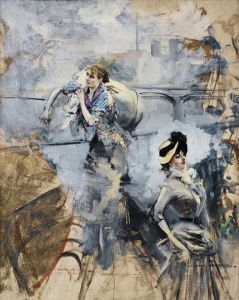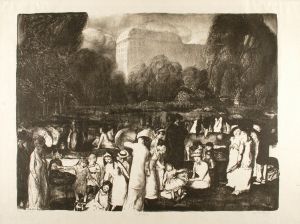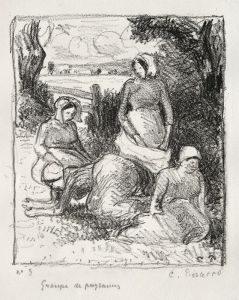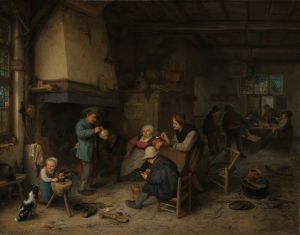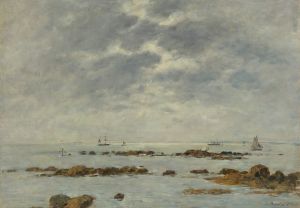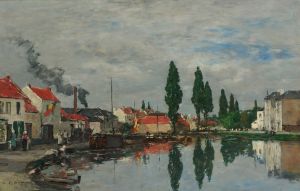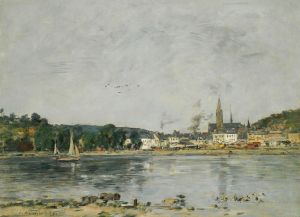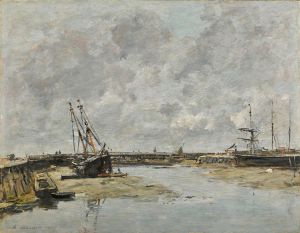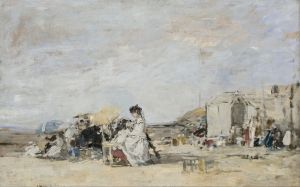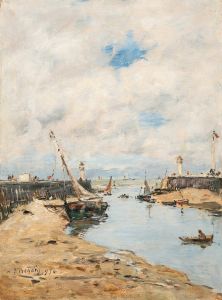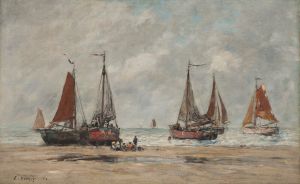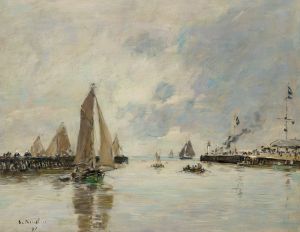
Washerwoman near Trouville
A hand-painted replica of Eugène Boudin’s masterpiece Washerwoman near Trouville, meticulously crafted by professional artists to capture the true essence of the original. Each piece is created with museum-quality canvas and rare mineral pigments, carefully painted by experienced artists with delicate brushstrokes and rich, layered colors to perfectly recreate the texture of the original artwork. Unlike machine-printed reproductions, this hand-painted version brings the painting to life, infused with the artist’s emotions and skill in every stroke. Whether for personal collection or home decoration, it instantly elevates the artistic atmosphere of any space.
Eugène Boudin's Washerwoman near Trouville is a painting by the French artist, who is widely regarded as one of the precursors of Impressionism. Boudin, born in 1824 in Honfleur, France, was known for his depictions of coastal scenes, landscapes, and everyday life, particularly in Normandy. His works often captured the interplay of light, sky, and water, reflecting his deep interest in naturalistic representation.
This particular painting, Washerwoman near Trouville, portrays a washerwoman engaged in her daily labor near the coastal town of Trouville-sur-Mer in Normandy. Trouville was a frequent subject in Boudin's works, as the town and its surroundings provided him with ample inspiration due to its picturesque landscapes and vibrant seaside life. The painting exemplifies Boudin's ability to depict ordinary moments with a sense of immediacy and authenticity, focusing on the simplicity of rural life.
Boudin's technique in this work reflects his mastery of plein air painting, a method of painting outdoors to capture the natural light and atmosphere of a scene. His brushwork is loose yet precise, allowing him to convey the textures of the landscape and the figure's clothing while maintaining a sense of spontaneity. The muted color palette and soft lighting in the painting evoke a tranquil and contemplative mood, characteristic of many of Boudin's works.
The washerwoman, a recurring subject in 19th-century art, symbolizes the labor and resilience of working-class women during this period. By choosing to depict such a subject, Boudin aligns himself with the Realist tradition, which sought to represent the lives of ordinary people rather than idealized or historical themes. However, his focus on light and atmosphere also foreshadows the Impressionist movement, with which he was closely associated.
Eugène Boudin's contributions to art were recognized by his contemporaries, including Claude Monet, who credited Boudin with introducing him to plein air painting. Boudin's works, including Washerwoman near Trouville, played a significant role in bridging the gap between Realism and Impressionism, influencing the development of modern art.
Today, Washerwoman near Trouville is appreciated for its historical and artistic significance, as well as its ability to capture a fleeting moment of everyday life with sensitivity and skill. The painting is an example of Boudin's dedication to portraying the beauty of the ordinary and his innovative approach to landscape and genre painting.





